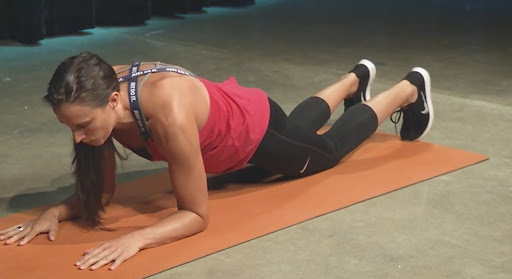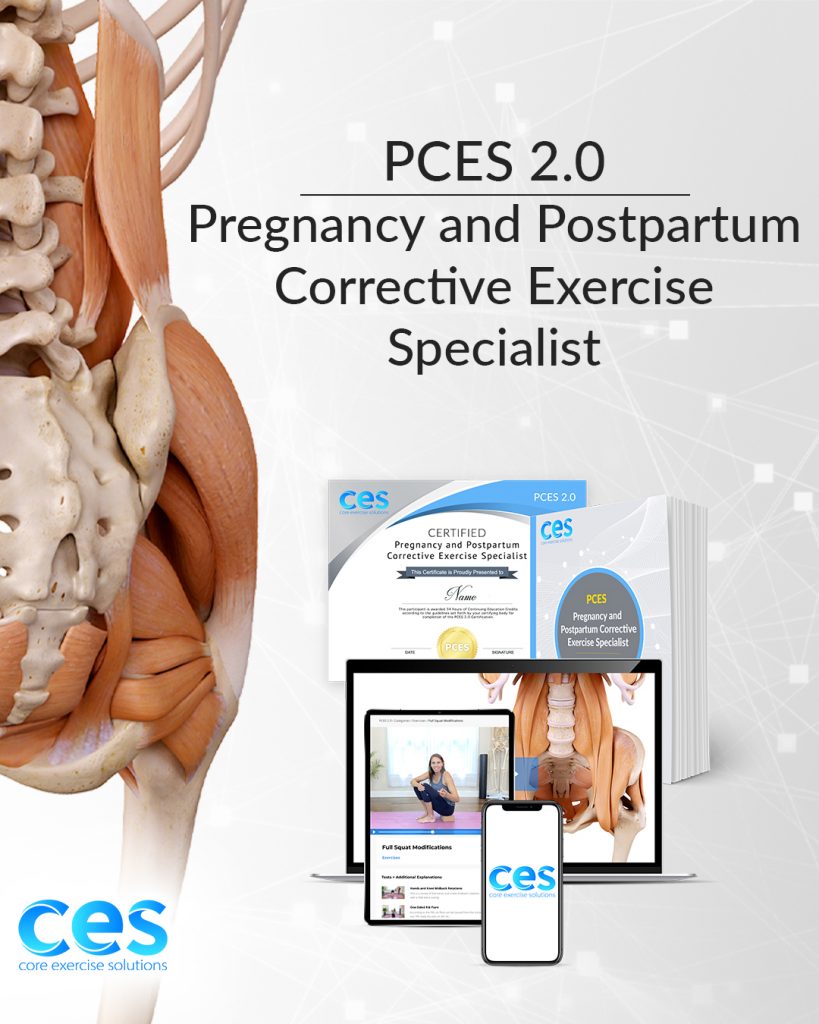Note From TG: This is a re-publication (with updated edits/additions) of an article I wrote a few years ago. I figured since I’m currently working with four women at the moment – three in person, and one distance based – who are pregnant, it was something I felt required a little dusting off.
Hope you enjoy it.
Okay, I know what some of you may be thinking: What does someone who has succumbed to male pattern baldness, hates The Notebook1, and pees standing up know about the female body, let alone speaking to something that’s arguably the most precious, magical, and delicate time of a woman’s life?
(insert shrug emoji here)

What to Expect (In the Gym) When Expecting
Well, first off: Not for nothing, I took health class in 9th grade, so I know where babies come from Smarty Pants. For those who don’t know, when a man and a woman love one another they place a note in a bottle and throw it into the sea.
Eventually a mermaid reads it, sends her pet seahorse to the Galapagos Islands where he then relays the message to Henry the stork.
And wah-lah…a baby arrives nine months later.
Don’t argue with me, it’s science.
Secondly, in the just over two decades I’ve been a strength coach I’ve worked with and trained a few dozen women through their pregnancies and I thought I’d share some of my own thoughts on the topic because I feel much of the information out there directed towards women is regurgitated, archaic, hogwash.
Admittedly I have a strong viewpoint and recognize that not everyone will agree with me (and that’s cool). But it’s my hope that this post at least opens up the conversation and helps encourage people to think outside the box.
For me there’s a massive dichotomy between what I do and what most (not all) of the research says we should be doing when working with someone who’s pregnant.
Obligatory Disclaimer: Every pregnancy is different; each woman needs to consider her own specific situation. And, to cover your bases, it’s best to consult with your physician. Preferably one that lifts…;0)
No one should be made to feel guilty or lazy if they need to take it easy; the health of the baby and mother are paramount.
While it always comes down to the individual, their comfort level, their ability to listen to their body, as well as their past training history, I find it somewhat disheartening that there are health professionals out there (both primary and tertiary, as well as many of us in the fitness industry), and even more articles, that suggest “training” should orbit around light walking and what mounts to folding laundry.

For me, when I’m working with someone who’s expecting, it’s about preparing them for something a helluva lot more significant than lifting pink dumbbells (or for that matter anything I’ll ever have to do as a member of the Y chromosome club).
I mean, I think it’s an accomplishment I can grow chest hair, but if you’re able to grow and push a human being out of your body, that’s next level shit.
If that’s the case, you’re also capable of lifting a barbell off the ground.
Repeatedly.
But let me be clear, and this is going to serve as the proverbial umbrella of the entire conversation:
It ALWAYS comes down to the woman’s comfort level.
Regardless of one’s experience in the gym, whether they’re a seasoned veteran or a newbie, I always instruct the women I work with to listen to their body. After a few hundred thousand years of evolution, the human body is pretty smart, resilient, and will let you know when it’s pissed off or doesn’t like something.
Now, I’m not insinuating that every expecting mother out there should go out and try to hit a deadlift PR on a weekly basis or snatch a mack truck over their head. But I’m certainly in the camp that feels we can offer a lot more than simply telling them to “go walk on the treadmill” or what mounts to playing patty cake for shits and giggles.
As an example, here’s one of my former female clients, Whitney, when I was a coach at Cressey Sports Performance performing some heavy(ish) deadlifts at roughly 32 weeks out.
And I say “heavy(ish)” because the weight in this video was no where near her best effort.
Because this is a gargantuan topic and because my head is spinning in several different directions – and because it’s something I can’t possibly cover in one simple blog post – I’m just going to shoot from the hip and blurt out some thoughts in random order.
Stuff
1. Before I begin I’d be doing a huge disservice to the discussion if I didn’t point people in the direction of Dr. Laura Latham, Julia Ladewski, and Stacey Schaedler all of whom are three very strong (and very smart) women who have written extensively on women training through their pregnancy.
Likewise, I’d be remiss not to mention Dr. Sarah Duvall’s excellent Pregnancy & Postpartum Corrective Exercise Specialist Certification – it’s not only THE best resource on the topic of training during pregnancy and postpartum, but, if I’m be honest, its THE best course I’ve ever taken.
To rank them:
1. Pregnancy & Postpartum Corrective Exercise Specialist
2. Lightsaber Self-Defense Against the Dark Arts (and fit-fluencers)
3. CPR.
To quote the Dr. Duvall herself:
“You gotta lift shit to fix shit.”
If you’re a trainer, strength coach, physical therapist, or I don’t know, an Orc – it stands to reason this information applies to 50% of your current/potential client roster…
…you WILL need to know this stuff.

I’d also be remiss not to point to THIS amazing archive on the Girls Gone Strong website – everything from myths about strength training during pregnancy to pelvic floor dysfunction is covered. In addition, HERE is a FREE 5-day course by GGS dedicated to trainers who work with postpartum clients.
(On that same front, if anyone reading has any high-quality websites, blogs, or general information they’d like people to know about PLEASE link to them in the comments section below).
2. Just to give you a little insight into the type of information being regurgitated out there, one of the women I used to train had a friend who told her that when she was pregnant, her physician recommended that a great way to get more protein in her diet was to pound milk shakes.
“I…drink…your…milkshake.”
Sorry, I couldn’t help myself.
Anyways, back to milkshakes.
Many women fall into the trap of “Well, I’m eating for two now,” and interpret it as a free-pass or opportunity to ramp up their caloric intake. Granted, there’s no doubt the metabolic demands of the body increases when another human being is growing inside of it, but lets not get too carried away here.
Most of the research and material I’ve read says that an increase of 400 kcals per day is more than enough to cover one’s bases, and to ensure adequate fuel for the body and the growing fetus.
Giving that a little perspective, 400 kcals mounts to roughly four (standard) tablespoons of peanut butter.

That’s it.
No need to go crazy with pizza buffets, a baker’s dozen from Krispy Kreme, or a daily liter of Coke challenge (the drink, not the drug). Don’t try to fool yourself into thinking that just because you’re pregnant, means you can go bonkers with the calories.
I am not saying it’s wrong, and I can attest to the weird food cravings that come about. For instance my wife was obsessed with tacos for a four-week span, and I’d be lying if I said I wasn’t more than happy to hit up our local taqueria several times per week; it’s not like she had to pull my arm.
However, just take this as a little dose of “tough love” and expectation management.
“Eating for two” is a bit overplayed and overstated.
3. While the topic of nutrition is HIGHLY individual, when in doubt stress protein. But really, I don’t care what side of the fence you preside on…low carb, Paleo, Vegetarian, Vegan, or whether you only eat foods that start with the letter Q:
The important thing to remember is to provide adequate calories.
Need a little nudge? Check out THIS amazing infographic from Dr. John Berardi of Precision Nutrition.
4. KEEP THINGS SIMPLE FOR THE LOVE OF GOD
But remember…
It all comes down to what THEY’RE comfortable with.
If I’m working with a current client it’s really more a matter of tempering down intensity (load) than it is reneging on any specific exercise. All of the women I am working with currently still deadlift, squat, row, press, etc. As their body changes we’ll of course modify things, but for all intents and purposes it’s business as usual.
I just make sure to check in prior to each session to see how they’re feeling and will make a judgement call on whether or not to adjust a specific session or not.
If I am working with a new client through her first pregnancy I will spend a fair amount of time on proper breathing mechanics and honing in on teaching basic stuff like Goblet Squats, TONS of core stability work (think planks, chops, lifts, Farmer carries, and Pallof Presses), teaching a proper push-up pattern, band resisted hip thrusts (<— video of my wife doing them at 24 weeks), single leg work, and the like.
You’ll notice it’s not that much different than working with a new client who isn’t pregnant, and that’s the point…
…a pregnancy doesn’t automatically mean you’re unable to go to the gym.
The last thing I want is for them to feel like a delicate flower.
Remember: Our job as their coach is to prepare them for something bigger…child birth. Assuming a thorough assessment, taking into consideration any contraindications, using appropriate progressions/regressions, and always checking in on comfort level, a barbell, used in a controlled setting, is no more dangerous than bathing in a tub of seed oils while drinking a diet soda on a yacht full of Paleo CrossFitters.
Likewise, HERE are some thoughts on postpartum considerations for those curious.
Putting things into context, Whitney G (from the deadlift video above) had been training with me for three years, and I knew she knew what she was doing – so I felt completely comfortable throwing deadlift and squat variations (and she still did chin-ups!) into her programs.
Speaking of chin-ups here’s my wife, Lisa, using (natural) progressive overload to complete a rest/pause set.
5. Look at Cara, another mom-to-be I worked with a few years ago who was still training and getting after it 34 weeks into her pregnancy.
Here she was deadlifting 200 lbs for eight reps:
Cara trained with me at CSP for well over two years prior to becoming pregnant, and, slight humble brag, was coached very well. We had no problems staying on task with her training when she was expecting.
Which is to say…while certain “tweaks” and modifications were made trimester to trimester, we were still able to maintain a significant training effect.
While she’s definitely an exception to the rule, despite being a first-time mom, she never experienced any morning sickness – something she attributed to not flaking on her training.
From Cara herself:
It was hard to find information specific to heavy weight lifting. Most “advice” given about exercise has to do with cardio, probably because that’s what doctors expect most women are doing. In general, there’s an attitude that if you are already fit, you can continue what you are used to. So I made my own decision to continue what I was doing, to the best of my ability, just paying attention to what felt comfortably to me personally. Taking longer breaks, adjusting weights and positions as needed.
Others might think I lift “too much” or let my heart rate get “too high” but I don’t believe in one-size-fits-all limits on what pregnant women should be doing. We’re all accustomed and able to do different things when not pregnant, and I think the same can apply during pregnancy.
6. By that same token, I don’t want to give the impression that every woman who’s pregnant has to lift heavy things. There are quite a number of other things to pay close attention to.
Shedding some light here are a few thoughts provided by Boston-based trainer Laura DeVincent, who’s Pre/Post Natal Certified through FitForBirth:
The first ten minutes of a session are spent diaphragmatic breathing, which I think is vital for keeping connected with the core. Although kind of awkward to coach, kegals are also important to prevent problems down the road. The next 30-40 minutes are spent on corrective exercise and strength training, and the last 10 minutes are spent interval training.
7. Expounding a bit further, something else to consider is stretching. Does it have a place? Many women (and fitness professionals) are under the assumption that stretching is an important factor, but I’d actually caution against it in this case.
In fact I’m actually not a huge fan of stretching in general – as most people suck at it, only stretch what they’re good at, and, what’s more, you’re not actually “stretching” anything anyways (only increasing the tolerance to stretching).
But that’s a debate for another time.
As the pregnancy progresses the body produces more of a hormone called Relaxin, which, as the name implies, makes the tendons and ligaments (soft tissue) “relax” or more “pliable” as the body gets closer and closer to the due date.
This can make activities such as running, yoga, and group classes not as much of a better or “safer” alternative as many will have you think.

Mirroring my thoughts, Laura notes:
In my experience, most women that are used to doing group ex classes feel nervous doing intense plyometric and cardio workouts, so they love the fact that they can get intense with weight training!
What most women deem “intense weight training” can be left to interpretation, but it stands to reason that contrary to popular belief, weight training can be argued to be SAFER than most other options…if for no other reason(s) than it is generally more controlled, can be more easily individualized, and focuses more on improving stability (via strengthening).
8. Taking it a step even further, and touching on the whole heart rate issue, my good friend Dean Somerset offers his insight as well:
The big cautions come from not wanting to have large blood pressure fluctuations early on in the pregnancy or having too much of an anaerobic load that would cause stress to the fetus. If the muscles are pulling all the oxygen and not enough is going to the fetus, it can cause some issues, so most cardio is best performed beneath anaerobic threshold, or in short bursts where fatigue isn’t a major factor.
Loading tends to have to be decreased over time due to changes in core stability, pelvic dilation, presence of lumbosacral ligamental laxity, and increasing pressure on the bladder and bowels. It’s cool to deadlift in the second trimester, but something to avoid in the third trimester in favour of squatting, moving from a conventional stance to more of a sumo stance as the pregnancy goes on.
I’m not going to sit here and diss on CrossFit – because there is plenty about CrossFit that I like.
All I’ll say is that if you’re someone who’s pregnant and you’re still adamant on going to CrossFit every week (and that’s completely fine), please, please, PLEASE use some common sense and recognize that it’s okay to pump the brakes a bit and not feel like you’re going to cough up a spleen when you train.
9. Shedding some more light on this topic, here are some sage words from strength coach, John Brooks:
The problem with training pregnant women is no two pregnancies are the same. With our first born my wife hit rep PRs into the early third trimester, did chins, and lots of unilateral leg work deep into the pregnancy. This latest (due in march) had some complications and bleeding early on, so she was on pelvic rest (which means you can pretty much do somewhere between jack and crap) now she’s back up to some basic body part split stuff. Totally different response to training stress in those conditions.
I’ve worked with a couple other women who didn’t have complications and for me the HR monitor was the key, Keep their HR down below threshold, keep a training effect going, and (especially if this is the second+) no movements that abduct the legs either quickly or under load (if you don’t know why ask your mother).
10. And bringing everything to a nice succinct stopping point, I want to share one of my former distance coaching client’s, Laura, (whom I trained through her second pregnancy), perspective on everything:
I was one of those lucky women Tony trained through a pregnancy. During this time, I also regularly attended kettlebell classes in preparation for my RKC certification, which I passed 7 month after delivery.
With solid programming from Tony that included a lot of heavy compound lifts and modifications where necessary (no barbell glute thrusters), I was fitter at the end of the pregnancy than I had been at the beginning, with a slew of new PRs in my pocket as well – including squats and deadlifts.
My daughter presented in a posterior position (sunny side up), but I only had to go through 20 minutes of pushing — believe me that’s rare. With doctor approval, I was back swinging kettlebells in the gym the day after I was home from the hospital, and I healed like a champ.
Now, I’m not trying to blow sunshine up my own butt, but how many women do you know who are back in the gym a mere day after returning from the hospital? [Pats self on back].
Mind you: This SHOULD NOT be considered a standard goal for everyone.
That said, there’s no way Laura could have done that – let alone even think about doing it – if she had only resorted to yoga classes and basing all of her training sessions around weights that are lighter than the purse she carries around on her shoulder.
11. Something else to think about is the fact that Laura had a very progressive MD (which is rare, but a breath of fresh air) and midwife, who, according to her, “understood that pregnancy is not an illness or handicap.”
As well, according to her, “I also took a lot of comfort from the wonderful book Exercising Through Your Pregnancy by James Clapp, which examines study after study showing the value of continuing to engage in strenuous exercise during pregnancy.
The book also provides advice for people who go into pregnancy in more of a de-conditioned state.
So there you have it
While not an exhaustive list, and certainly a topic which deserves someone taking a more proactive approach into what’s the right course of action for HER, I feel this post provides a rather unique (and dare I say: anti-status quo) approach to how women should go about exercising through their pregnancy.
I’m in no way saying that my opinion is right or should be considered the gold standard. But it deserves every bit as much consideration as all the other advice being given.
Coming full circle, isn’t it funny how people will often scoff, give double takes (or worse panic) if they see a pregnant woman lifting appreciable weight in the gym, yet fail to recognize that women have been partaking in far superior activities – walking across continents, manually plowing fields, hunting, and gathering – loooooong before barbells existed.
They (and their babies) turned out just fine.













